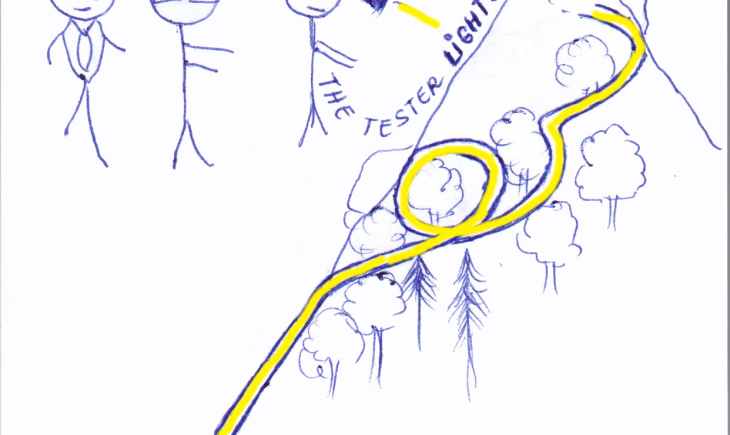
Altom at Mobile World Congress 2015
We are happy to announce that part of our team will be heading off to Barcelona at the beginning of March to participate in Mobile World Congress.

We are happy to announce that part of our team will be heading off to Barcelona at the beginning of March to participate in Mobile World Congress.

The other days I was reading a very interesting book “Lessons Learned in Software Testing: A Context-Driven Approach – by Cem Kaner, James Bach and Bret Pettichord”.
I sketched some lessons that I found very interesting, mainly from the first two chapters “The role of the tester” and “Thinking like a tester”. Enjoy!
We are happy to share the news! Our colleagues, Ale, Ramo, Rares and Sandra, will be attending this year’s EuroSTAR conference as TeamSTAR. They have already started to make lists with the tutorials and lectures they would like to attend, and hope to do a good job conveying their conference experience through the daily video… read more
I mentioned in the previous article that I would discuss more on the similarity of the phases in a qualitative research process and the phases of the testing activity.
So I continue here the parallel with the book – ‘Reliability and validity in qualitative research’, by Jerome Kirk and Marc L. Miller – and a more extended discussion on invention, discovery, interpretation and explanation.
“[…] the full qualitative effort depends upon the ordered sequence of invention, discovery, interpretation, and explanation.” (page 60)
When I test a product, I go through a sequence of different activities that focus on different aspects of the testing process.
“Invention denotes a phase of preparation, or research design; this phase produces a plan of action.”
In my case, I could see this as the stage at which I decide how to test a software service/product, by identifying and building a test strategy.
In the book three sub-phases associated with invention are presented, in the case of anthropological research: the first directions to the field to be studied, first look over the field and the first taste of it (meaning the first interaction with the culture to be studied). These further dictate the approach of the research.
I associate this with the experience of learning how to approach the testing task at hand. It’s what happens…
A while back, my mom had mentioned that Dara, my oldest niece, who is about to turn 12 soon, had started a computer science class at school and was having some problems with C++ programming that no one in the family could help her with. So, when I was at home visiting them a few months ago, I asked Dara if she wanted me to see if I can help her with that, and she mentioned she had problems understanding arrays.
We went through what the teacher had told them and I did my best to explain them a bit better and give her some examples, which seemed to have helped. However, I suggested that we try to do one of her homework exercises together and asked her if she had any that we could look at. She told me about this website that is used by students all over Romania (http://campion.edu.ro/) which has programming exercises grouped by age/level and by the topic they cover, and that there are a few there that their teacher had suggested they try if they want to practice the use of arrays. So we chose the first one.
Here’s what it said:
Ana and Maria are playing a game with cards with 5 digit numbers written…
One book I read a while ago from the office’s library is about qualitative research. It’s called ‘Reliability and validity in qualitative research’, by Jerome Kirk and Marc L. Miller.
It sounds fancy and scientific, and it has not been an easy read for me, but I really enjoyed it.
I find it full of great ideas, containing some very consistent examples and discussing ways in which qualitative research can be performed, as well as identifying some really interesting aspects of this approach, with relation to social sciences and anthropology. But I do not intend to review this book.
I’ll try to discuss how I find that some ideas in the book apply to my testing activities. As I read along the pages, I made some thought exercises and tried to identify how my work relates to the ideas presented.
As the title of the book suggests, its framework is given by the reliability problem and the validity problem that arise when performing qualitative research. I instantly related these two problems to…
Here are some of my thoughts in the form of questions and answers, which mostly come from feedback I gave Alex and Oana on exploratory testing when I first started out as a tester, and although much has changed since, I still have a lot to learn in order to become better at my craft… Enjoy! 😀
Q: So… pair testing; comparing the experience to testing alone, what are the things you did differently when testing with someone else?
A: Pair testing? Err… don’t you mean peer testing? Hm…
*thought about this for a while, then googled a bunch of stuff regarding peer/pair testing*
Okay, let me try to explain why naming it peer testing makes sense to me: …